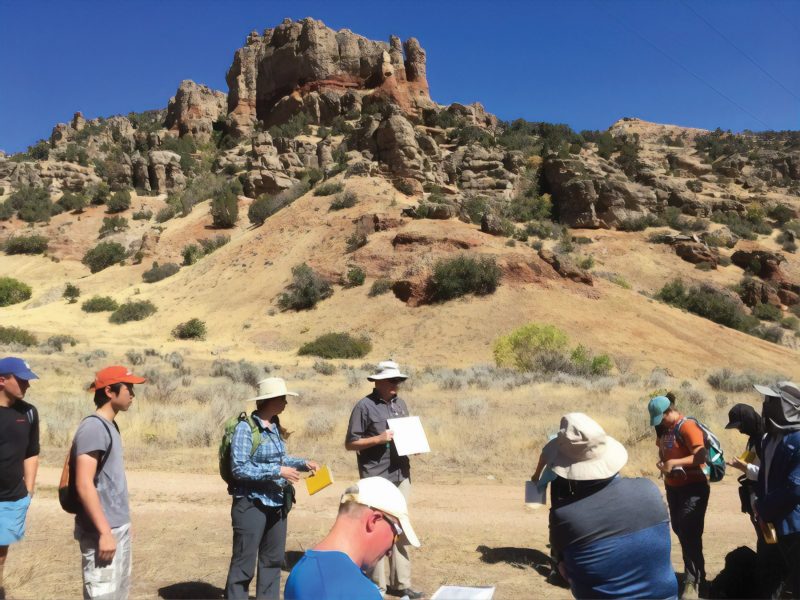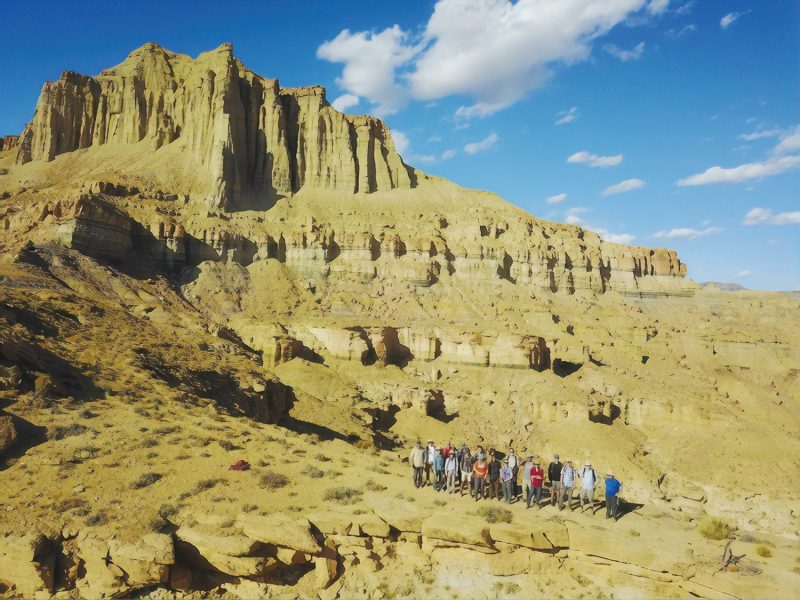Sediment and Structure in the Cordilleran Foreland Basin System
December 4, 2019


Drone photo of students and trip instructors on the top of Campanian Neslen Formation (fluvial-tidal channels) among the Book Cliffs of Utah.
The fall 2018 field trip for the courses GEO 383S (Foreland Basins) and GEO 383 (Clastic Depositional Systems) at The University of Texas at Austin explored the diverse stratigraphic and sedimentologic record of the Cordilleran foreland basin system in Utah and western Colorado. The marine and nonmarine depositional systems form important analogues for foreland reservoir units around the world. The 14 UT graduate students in the two courses worked with professors and researchers Ron Steel, Cornel Olariu and Brian Horton to assess the long-term sedimentary and structural evolution of the foreland basin system, with consideration of regional sea level, climate and tectonics in the development of varied stratigraphic systems. The trip was funded by Chevron.
Brian Horton
Professor, Department of Geological Sciences
Research Professor, Institute for Geophysics
